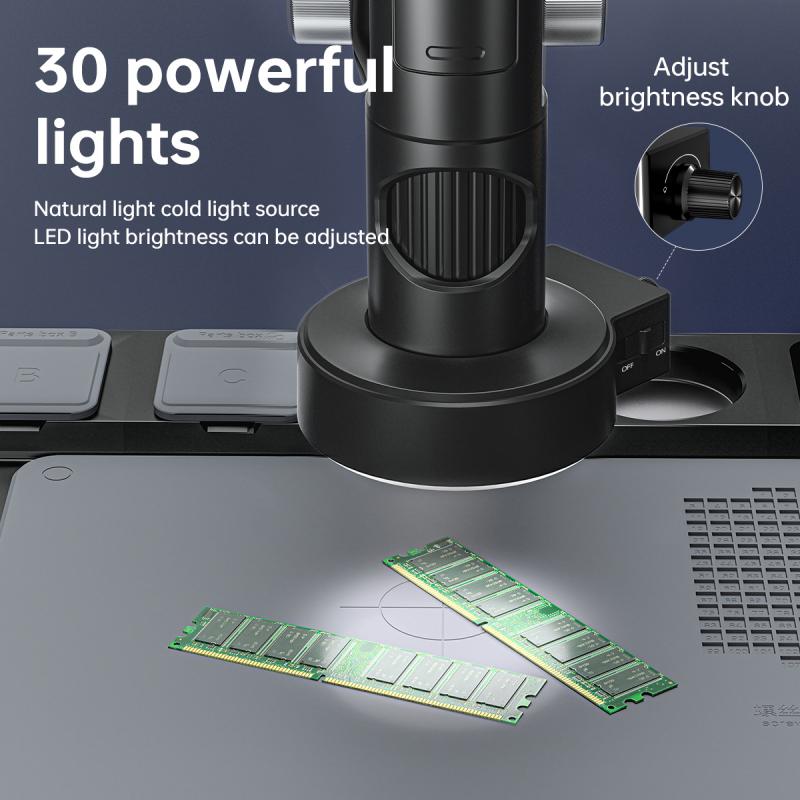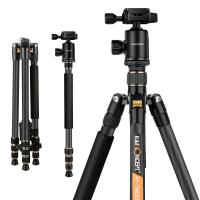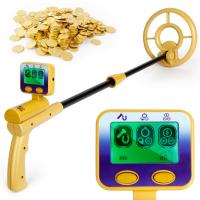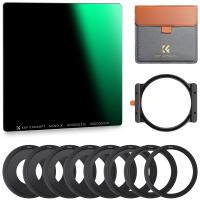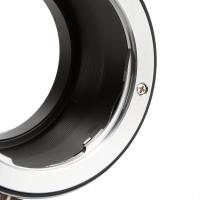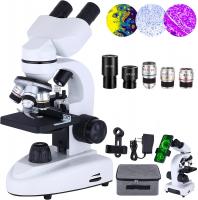What Is A Nosepiece On A Microscope ?
A nosepiece on a microscope is a rotating mechanism that holds and allows for the interchange of different objective lenses. It is typically located below the eyepiece and above the stage of the microscope. The nosepiece has several holes or slots where objective lenses of varying magnifications can be inserted. By rotating the nosepiece, different objective lenses can be brought into position, allowing the user to switch between different levels of magnification without having to physically change the lenses themselves. This feature makes it convenient and efficient to observe specimens at different magnifications during microscopy.
1、 Definition and Function of a Nosepiece on a Microscope
A nosepiece on a microscope is a rotating mechanism that holds and allows for the interchangeability of objective lenses. It is typically located below the eyepiece and above the stage of the microscope. The nosepiece is an essential component of a compound microscope, which is a type of microscope that uses multiple lenses to magnify the specimen.
The main function of the nosepiece is to hold the objective lenses securely in place and allow the user to easily switch between different magnifications. The objective lenses are mounted on the nosepiece and can range in magnification power, typically from 4x to 100x or higher. By rotating the nosepiece, the user can select the desired objective lens and bring it into position above the specimen.
The nosepiece is designed to ensure that the objective lens is properly aligned with the optical path of the microscope. This alignment is crucial for obtaining clear and accurate images. The nosepiece also helps to maintain the parfocality of the microscope, which means that when the user switches between objective lenses, the specimen remains in focus, requiring only minor adjustments.
In recent years, advancements in microscope technology have led to the development of motorized nosepieces. These motorized nosepieces can be controlled electronically, allowing for automated switching between objective lenses. This feature is particularly useful in applications where frequent changes in magnification are required, such as in research laboratories or medical diagnostics.
In summary, a nosepiece on a microscope is a rotating mechanism that holds and allows for the interchangeability of objective lenses. It plays a crucial role in selecting the desired magnification and maintaining the alignment and focus of the microscope.
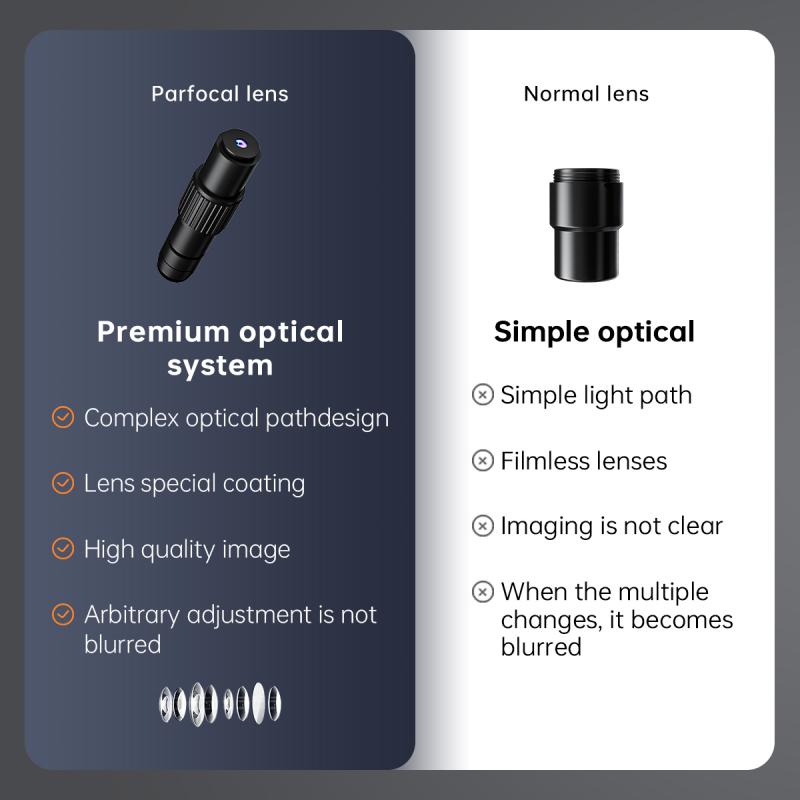
2、 Types of Nosepieces Used in Modern Microscopes
A nosepiece on a microscope is a rotating mechanism that holds and allows for the interchangeability of objective lenses. It is an essential component of a microscope as it enables the user to easily switch between different magnifications and adjust the focus accordingly.
The nosepiece is typically located beneath the microscope's stage and consists of several objective lens positions. Each position holds a different objective lens, which determines the magnification and resolution of the microscope. By rotating the nosepiece, the user can quickly switch between these lenses without having to manually remove and insert them.
In modern microscopes, there are various types of nosepieces used to accommodate different objectives and enhance the functionality of the microscope. One common type is the quadruple nosepiece, which holds four objective lenses. This type is commonly found in educational and research microscopes, providing a range of magnifications for various applications.
Another type is the sextuple nosepiece, which holds six objective lenses. This type is often used in advanced research microscopes, where a wider range of magnifications is required for detailed observations and analysis.
In recent years, there has been a growing trend towards motorized nosepieces in high-end microscopes. These motorized nosepieces allow for automated switching between objective lenses, making it easier and more efficient for users to navigate through different magnifications. Additionally, motorized nosepieces can be integrated with imaging software, enabling automated image acquisition and analysis.
Overall, the nosepiece on a microscope plays a crucial role in facilitating the versatility and functionality of the instrument. The various types of nosepieces available cater to different needs and applications, ensuring that microscopes can adapt to the diverse requirements of scientific research and education.
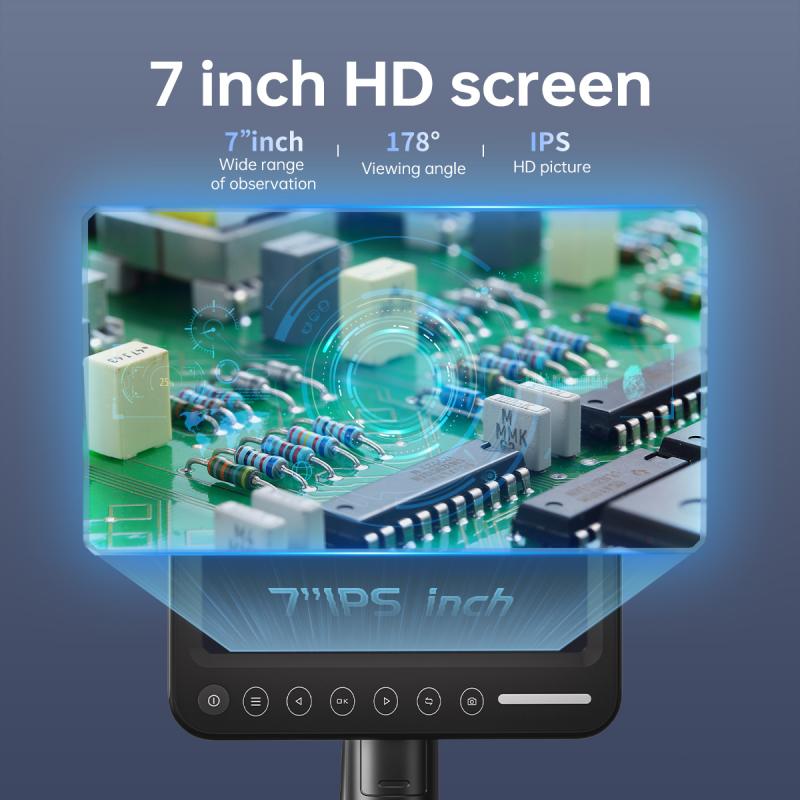
3、 How to Properly Use and Rotate a Nosepiece on a Microscope
A nosepiece on a microscope is a rotating mechanism that holds multiple objective lenses. It is located beneath the microscope's body tube and allows the user to easily switch between different magnifications without having to remove and reinsert lenses manually. The nosepiece typically has several positions, each corresponding to a different objective lens.
To properly use and rotate a nosepiece on a microscope, follow these steps:
1. Start by placing the microscope slide on the stage and securing it with the stage clips.
2. Begin with the lowest magnification objective lens (usually 4x or 10x) in position over the slide.
3. Look through the eyepiece and adjust the focus using the coarse and fine focus knobs until the image is clear.
4. Once the image is in focus, rotate the nosepiece to the desired magnification. This can be done by turning the nosepiece clockwise or counterclockwise until the desired objective lens clicks into place.
5. Use the focus knobs again to bring the image into sharp focus.
6. If you need to change the magnification, simply rotate the nosepiece to the next position and refocus as necessary.
It is important to note that when rotating the nosepiece, avoid applying excessive force or skipping positions, as this can damage the lenses or the mechanism itself. Additionally, always handle the microscope with care to prevent any accidental damage.
From a modern perspective, some microscopes now come with motorized nosepieces that can be controlled electronically, allowing for seamless and precise switching between objective lenses. This feature is particularly useful in research and advanced microscopy techniques where rapid magnification changes are required.

4、 Importance of Nosepiece Alignment for Clear Microscopic Imaging
A nosepiece on a microscope is a rotating mechanism that holds and allows for the interchangeability of objective lenses. It is typically located below the eyepiece and above the stage of the microscope. The nosepiece is designed to hold multiple objective lenses of different magnifications, allowing the user to easily switch between them without having to manually remove and insert lenses.
The importance of nosepiece alignment for clear microscopic imaging cannot be overstated. Proper alignment ensures that the objective lens is precisely positioned in the optical path, allowing for accurate focusing and optimal image quality. If the nosepiece is not aligned correctly, it can result in blurry or distorted images, making it difficult to observe and analyze specimens accurately.
In recent years, advancements in microscope technology have led to the development of motorized nosepieces. These motorized nosepieces can automatically align the objective lenses, ensuring precise positioning and reducing the risk of human error. This automation has greatly improved the efficiency and accuracy of microscopic imaging, particularly in fields such as biology and medicine where high-resolution imaging is crucial.
Furthermore, some motorized nosepieces are equipped with intelligent software that can automatically detect and select the appropriate objective lens based on the user's desired magnification. This feature simplifies the imaging process and saves time, allowing researchers and scientists to focus more on their observations and analysis.
In conclusion, the nosepiece on a microscope plays a vital role in achieving clear and accurate microscopic imaging. Proper alignment, whether manually or through motorized mechanisms, is essential for obtaining high-quality images. The latest advancements in motorized nosepieces have significantly improved the efficiency and accuracy of microscopic imaging, making it an indispensable tool in various scientific and medical fields.
